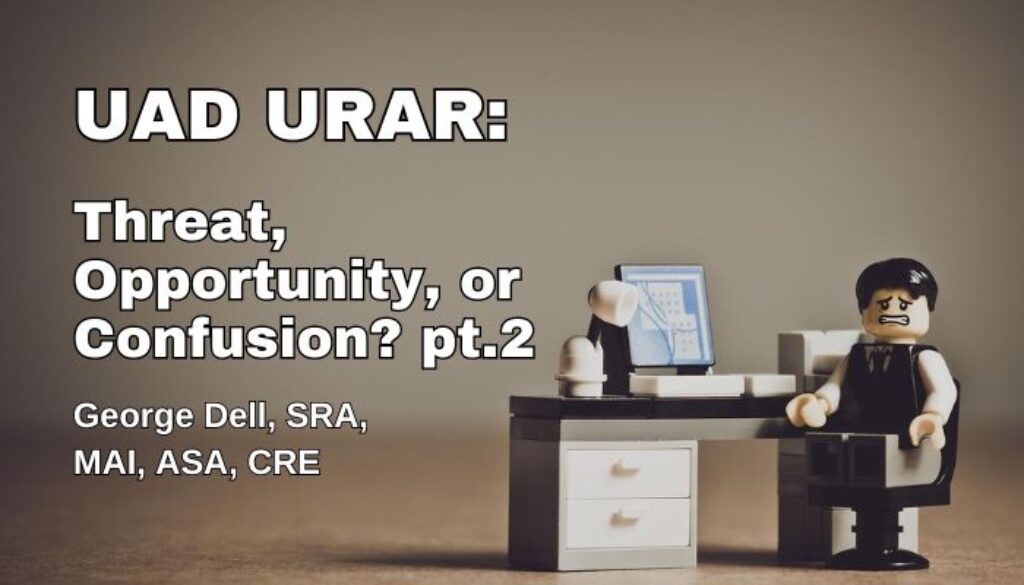The new UAD and URAR come on together.
In this second part of our series on UAD and URAR as we prepare to look at possible unintended consequences. (Catch up and read part 1 here.) In later continuing parts, we will look at how the URAR/UAD format “dynamic” may affect users: appraisers, lenders, AMCs, and others. Finally, we might look at how the new forms may affect the public good, “public trust.”
The UAD is a much-expanded set of fixed words, fields, and quantities designed to make data and its analysis more uniform. It serves to eliminate much subjective wording, such as “good” “superior”, “nearby” and “desirable.” There are benefits. But the UAD also removes some of the benefit of appraisers’ reactions — which may mirror the behavior, thinking, and psychology of “typical” buyers!
And the URAR is truly a “uniform” form. It replaces the various forms for different property types.
On the other hand, you could also look at the URAR as truly, completely non-form report delivery. The technology method is a “dashboard.”
The form is not a form!
Perhaps in getting mentally prepared for the change, it may be best to emphasize what we need to forget! What to unlearn! Drop some useless outdated habits.
To evaluate this new dashboard concept, it is good to get an understanding of what is a dashboard, why it faces us, how it works, and how to approach this visual technology.
First, one major context! Our GSEs (Fannie Mae and Freddie Mac) explicitly state that, while they organize the process of data collection, data definition (the new UAD), and delivery structure – the analysis is being left entirely up to the appraiser!
The major result here is that this series on the UAD/URAR will come around to answer the question: what can the individual appraiser do to create value (make money) in the critical part: the analysis? It is easy to see that the future requires that the appraiser must enhance two interactive competencies: critical/statistical thinking, and the use of computer algorithms. This blend is the secret to a happy and gratifying future.
In thinking about thinking, analysis, and the dashboard delivery, we can simplify and understand things this way:
- Data enclosure, analysis, and reporting are unified in one place – the dashboard.
- Judgment of a field-related expert is still needed, and even more necessary.
- Competence requires interaction of critical thinking and computation.
In summary, the old “appraisal process” is replaced by presentation of:
- Facts
- Logic
- Metaphors
- Useful stories
In the next issue (part 3) we will look at the dashboard, and how it affects the appraiser’s work.
